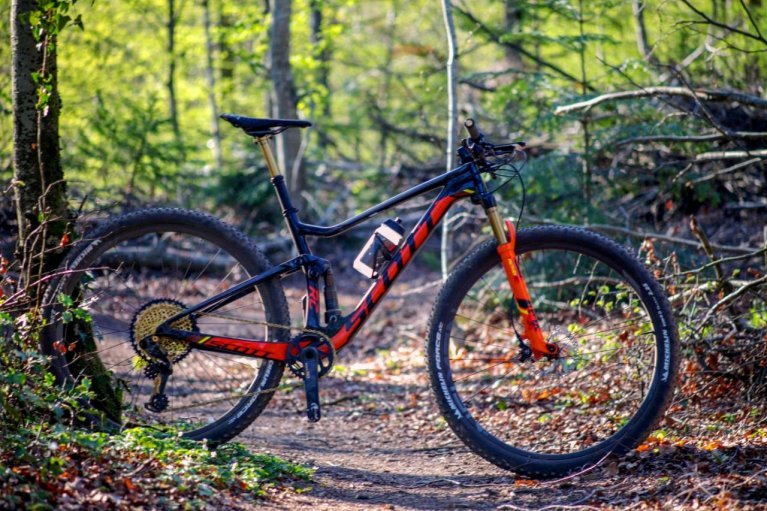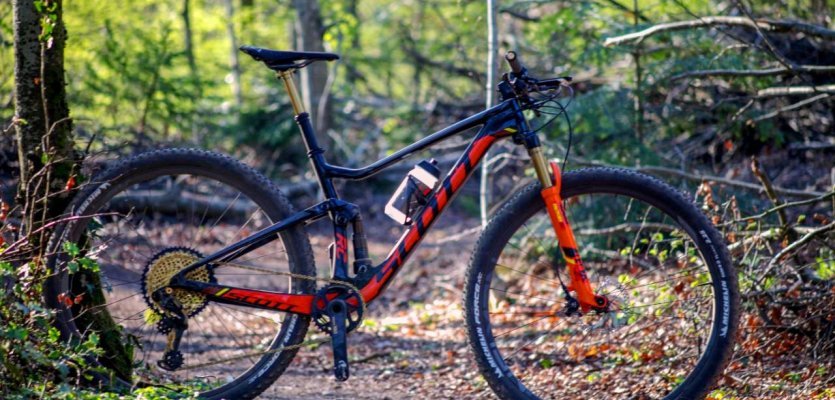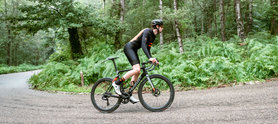
29er – A must-have for every XC rider
Our XC World Cup racer Theresia explains why 29”-wheels have become indispensable in XC mountain biking and Trail riding.
I started using 29er bikes during the 2013 season. Back then, the larger wheel size was still heavily debated and in many ways, the technology was still in its infancy. What advantages do mountains bikes with 29”-wheels have? Don’t they add a lot of weight to the entire bicycle and consequently negatively influence the handling? How is the cornering? I will try to answer these questions based on my XC racing experience on 29ers gained over the last few years.
It was in 2012, when I last used a 26er mountain bike for racing. Today, this wheel size has basically vanished from the cross-country race scene. The transition to the larger 29”-wheels went rather quickly, after they were first introduced and the initial doubts were overcome. One simply learned to appreciate their many advantages.

My last 26er bike
Of course, at the beginning the professional riders were sceptical. The advantages aside, adjusting to such a big change is not easy. Especially smaller riders struggled with the large 29-inch diameter, as frame geometries had not yet been adapted sufficiently to accommodate the larger wheels. In addition, they were heavier and increased the inertial mass. They were also not as stiff due to the larger size, especially since many wheels still came with regular quick release axles. Finding fitting components was no easy task either and a lot of times product was more expensive, just think of tyres. However, these initial problems have, by now, almost all been completely overcome.
From 26“ to 29“ and no looking back
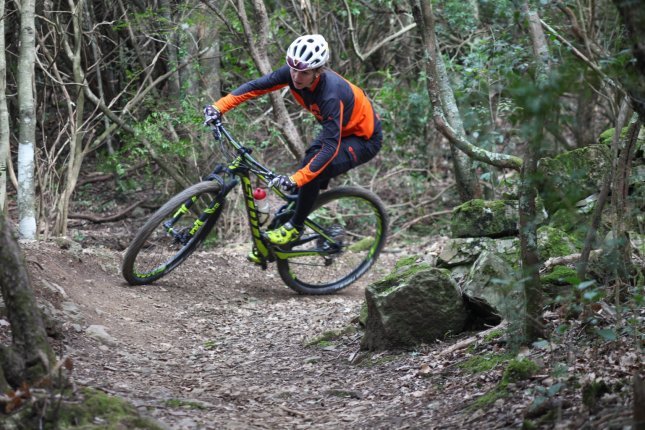
Big wheels on beautiful trails.
The main reason for switching from 26” to 29” is their rolling characteristics. Once in motion, 29-inch wheels are faster. Every revolution translates into more distance travelled. Larger wheels also roll over obstacles more easily, whether it be rocks or roots. This makes for a smoother ride on the trail and less fatigue during the race. As indicated above, it takes a little more effort to accelerate the larger wheels though. And tight corners are more difficult to navigate. Flat turns are easier though due to the better roll-over characteristics. Since my switch, I have never considered going back. The pros simply outweigh the cons.
Aren’t 29ers too heavy?
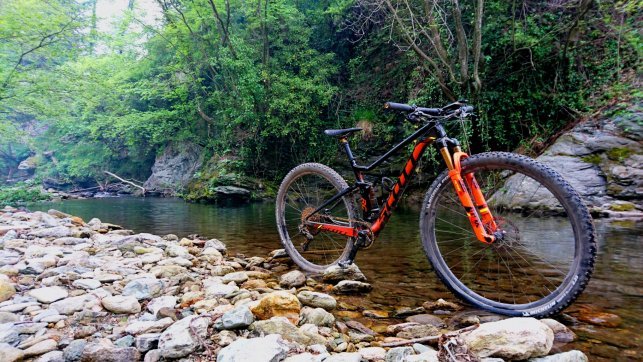
Scott Spark Race Fully
Yes, the overall weight of bike first went up when 29”-wheels were introduced. There are very few race bikes that now manage to get below 9 kg. With 26 inches, we were already below 8 kg. A 1000 gram difference is a lot of weight and especially noticeable on the climbs. However, it’s a trade-off I am willing to make as I'm faster. My current hardtail weighs in at 9.1 kg and my full-suspension MTB at 9.9 kg. The bikes will keep getting lighter, maybe 8 kg and less will be reached again soon.
The evolution of 29er mountain bikes
The evolution across the whole spectrum of 29“ mountain bike technology has been tremendous, be it frame geometry, the wheels themselves, axle standards or other components. Until last season, the 27.5” wheels that were later introduced as a compromise between 29” and 26”, were still deemed an alternative for smaller riders. This season I only occasionally still see a female rider on a 27.5” XC MTB. Since XS and S size frames and geometries have been adopted so well to the much faster 29er wheels, there is no need for 27.5” XC bikes anymore.
Stiffness at any cost?
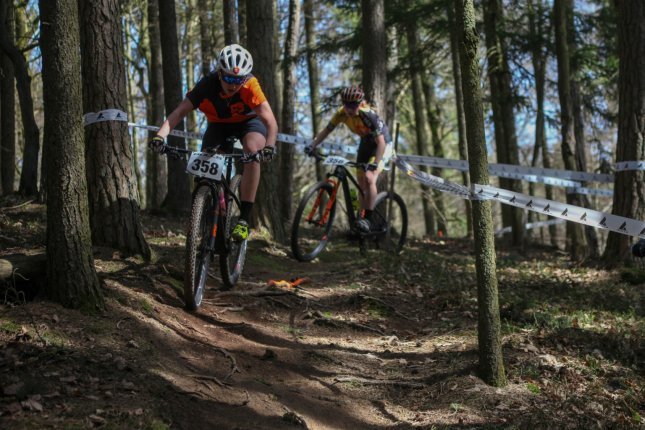
A trail covered with roots forming part of the race course.
In professional XC racing, trimming weight off the bikes is the main focus. Carbon fibre wheels play a huge role here now. However, it’s not only their weight but also their stiffness. In comparison with aluminium, carbon fibre is stiffer and stronger. By now, there is a huge selection of carbon wheels on the market. The new and wider boost standard adds to the wheel’s stiffness as well – independent of the material used. The wider axles reduce the angle of the spokes and forces can be distributed more efficiently.
Changes in frame geometry
Chainstays have become longer and the bottom brackets have been lowered. However, these were adjustments to the centre of gravity, made necessary by the larger wheels. In general, the larger wheels have no effect on the overall geometry of the frame.
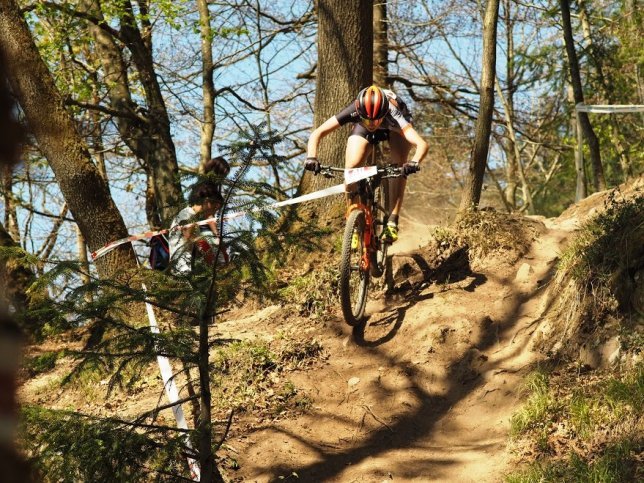
Racing XC on my 29er full-suspension bike
Over time, the geometry of MTB frames in general has changed though. Overall, chainstays have become shorter, reach has been extended, the head tube angle has become flatter and stack has been reduced (XC bikes only).
Summing it up: Size matters!
29“-wheels are here to stay. Professional racers fight for every second and 29ers are simply faster, making them indispensable in XC racing. These advantages apply to trail riding in the same way. Even Enduro and Downhill will see more of the larger wheels as speed and rolling characteristics become ever more important. The wheels are getting lighter and lighter while improvements in stiffness and stability make them even more attractive for these disciplines.

